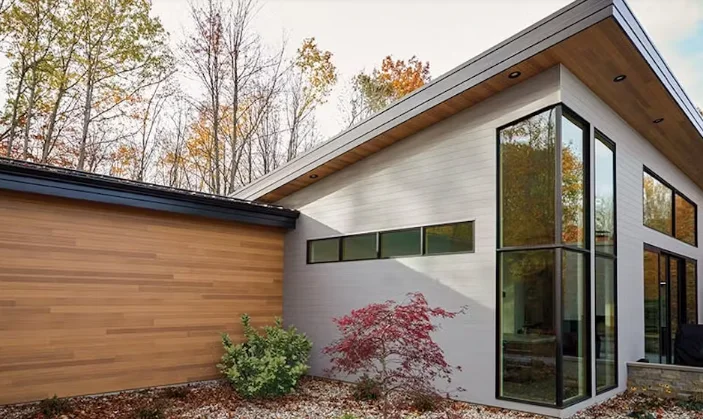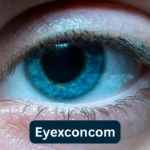The future of multi-functional siding presents an exciting opportunity for homeowners to enhance their properties’ aesthetics and functionality. As technology and design evolve, siding options are no longer limited to protective layers. We will explore how innovations in materials and design are shaping the next generation of siding, transforming it into an integral part of a home’s exterior. From energy efficiency to aesthetic versatility, multi-functional siding promises to meet the growing demands of modern living while offering sustainable solutions for homeowners. This transformation is about curb appeal and creating a more efficient, comfortable, and eco-friendly living environment.
The Rise of Sustainable Materials in Siding Design
A shift toward sustainable materials will greatly influence the future of multi-functional siding. As the environmental impact of construction becomes an increasingly important concern, homeowners and builders are turning to eco-friendly options that reduce energy consumption and minimize waste. New materials such as recycled wood, bamboo, and composite products are gaining popularity for their durability and reduced environmental footprint. These materials meet modern architecture’s aesthetic demands and provide practical benefits, such as enhanced insulation and moisture resistance. The combination of beauty and sustainability in these materials drives the development of more functional siding options. As the focus on environmental responsibility grows, we can expect further innovations in sustainable materials to take center stage, offering even more environmentally friendly choices for homeowners looking to upgrade their homes with multi-functional siding.
Energy Efficiency: Enhancing Performance with Insulated Siding
One of the key trends in multi-functional siding is the integration of energy-efficient features. With rising energy costs and increased awareness of climate change, homeowners are seeking solutions that help reduce their energy consumption. Insulated siding is gaining attention for its ability to improve a home’s thermal performance. By incorporating insulation into the siding itself, this type of siding minimizes heat loss in winter and keeps homes cooler during the summer. As technology advances, the insulation materials used in siding are becoming more effective and affordable. Not only does this type of siding reduce energy costs, but it also contributes to a home’s overall comfort by maintaining a more consistent indoor temperature. Integrating energy-efficient features into siding design will likely become a standard expectation in future homes, ensuring that sustainability and functionality go hand in hand.
Aesthetic Flexibility: The Role of Customization in Siding
Gone are the days when siding was a simple, one-size-fits-all solution. Today’s multi-functional siding allows for greater customization, allowing homeowners to personalize their exterior in ways that reflect their tastes and style preferences. Whether it’s the color, texture, or the material itself, siding manufacturers offer various options for a truly unique look. Advances in printing technology also enable designers to create more intricate patterns and textures, further expanding the possibilities for customization. This flexibility makes it easier for homeowners to create visually appealing homes that meet practical needs, such as durability and energy efficiency. As technology improves, the ability to tailor siding to specific preferences will only increase, offering even more possibilities for creative expression in home design.
Weather Resistance: Innovations for Durability and Protection
Another significant factor in the future of multi-functional siding is the increased focus on durability and weather resistance. As extreme weather events become more common, Lake Stevens homeowners seek siding solutions that offer enhanced protection against the elements. New coatings and treatments are being developed to make siding more resistant to rain, wind, snow, and fire. These innovations not only extend the lifespan of the siding but also reduce the need for frequent maintenance, making them more cost-effective in the long run. Additionally, weather-resistant siding can contribute to the overall resilience of a home, ensuring that it remains secure and protected against the forces of nature. As climate change shapes weather patterns, the demand for durable, weather-resistant siding options will likely increase, making it a crucial aspect of future home construction.
Smart Siding: The Integration of Technology into Building Materials
The rise of smart homes has led to the development of innovative siding options incorporating technology for added functionality. Smart siding refers to siding materials that can be integrated with sensors and other smart home devices to monitor various conditions. For example, smart siding may be able to detect temperature changes, humidity levels, or moisture buildup and send alerts to homeowners if there is an issue. This could help prevent mold growth or water damage before they become significant problems. Furthermore, smart siding could be designed to respond to external conditions, such as adjusting its properties to optimize energy efficiency or protect the home from extreme weather. Integrating smart features into building materials will become more common as technology advances, offering homeowners new ways to manage their homes more efficiently and effectively.
The future of multi-functional siding promises to reshape how we think about home exteriors. As technology advances, we will see siding options that enhance a home’s beauty and provide significant functional benefits, such as energy efficiency, durability, and weather resistance. Integrating sustainable materials, customization options, and smart technologies will make siding an even more integral part of a home’s overall design and performance. While cost will remain an important consideration, innovations in production and material science will likely make these advanced siding solutions more affordable and accessible to a wider range of homeowners. As we look ahead, multi-functional siding will undoubtedly become a cornerstone of modern home construction, offering a perfect blend of form and function for the homes of tomorrow.

Shannon Reyes is a seasoned writer with a knack for crafting engaging blogs on a variety of service industries, including plumbing, cleansing, moving, pest control, and roofing. With a keen eye for detail and a passion for helping readers navigate complex topics, Shannon brings her expertise to life through informative and accessible content.










